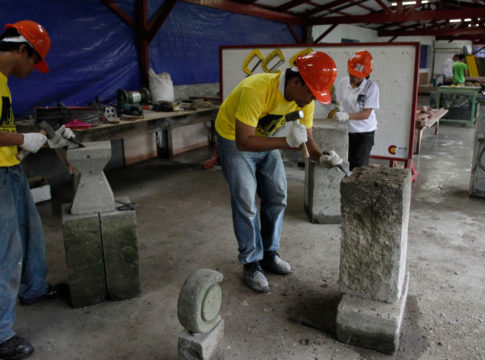
Imagine trying to hit multiple invisible and moving targets with a single shot from a clunky weapon with an imprecise scope. Needless to say, you’re not going to end up as an award-winning marksman under such conditions.
This, I believe, is one way we can think about the limitations of using public policy to develop the workforce of the future.
Even under the best circumstances, it’s hard to predict what jobs are going to be available in five or ten years. That’s probably doubly true in today’s environment as changes in the economy, advancements in technology, and the ripples of globalization promise to seriously reshuffle the deck.
Policy can accomplish lots of important things. But it is notoriously slow-moving. It’s generated by flawed humans. It requires countless political compromises. It must be implemented via byzantine government bureaucracies. And the uniformity it requires is generally ill suited to varied and swift-shifting conditions.
So it might be the case that the most promising approach to training is one that relies on the basics of conservatism: Concede our inability to perfectly foresee what’s around the corner; avoid centralization; don’t assume the government will have all of the answers; and rely on a vast array of small-scale, nimble, local solutions crafted by civil-society actors.
This is the exact philosophy behind a terrific new guidebook on career and technical education (“CTE”) published by Philanthropy Roundtable. Because it is aimed at donors, author David Bass’s short volume begins with the non-state sector in mind. It shows, convincingly, that when it comes to developing job-preparation programs, philanthropists and employers are especially well situated to be effective. The former can be creative, experimental, and agile; the latter are uniquely knowledgeable about workforce needs and have the ultimate self-interest in succeeding.
There are three elements of the book that are worth calling out. First, it has a collection of user-friendly data points that help explain why this issue is so important. For instance, young adults with just a high school diploma have a poverty rate of 22% today (it was only 7 percent in 1979). Only four percent of Pell grants go to students pursuing an occupational certificate (74% go to those working toward a four-year degree). Though the US ranks second in baccalaureate attainment, we’re 16th in postsecondary attainment below a bachelor’s degree. In Switzerland, 70% of young people are enrolled in apprenticeships; in Germany, it’s 65%. A generation ago, young US men earned 85% of the average US wage; now it’s only 58%. About one in four adults age 18 to 34 still lived with his parents in 2015.
Second, recent research and experience have uncovered clear lessons for how to smartly develop programs. For example, high school CTE programs need rebranding (many people still perceive them very negatively). Students need convenient ways, times, and places to enter training and sequence the collection of credentials. Adults in particular need to know there will be a discernible return on investment before they enroll in any program. “Stackable credentials” allow participants to accumulate skills gradually, each adding immediate value and building toward the future. Programs must be responsive to changing labor markets and reflect the latest technology.
Third, there are countless exciting programs—e.g. apprenticeships, quick training, degree-granting—already up and running across the nation. They are being funded and operated by a constellation of philanthropies, nonprofits, schools, and corporations. JPMorgan Chase has committed $250 million over five years to middle-skill career pathways. The Lumina Foundation is aiming to grow to 60% the percentage of Americans with a high-quality postsecondary degree. About 50 of New York City’s high schools are dedicated exclusively to CTE. Toyota’s Advanced Manufacturing Technician program recruits high-school students to spend three days every week in the company’s advanced manufacturing center. ExxonMobil helped establish the Community College Petrochemical Initiative to recruit faculty and train students.
Thankfully, CTE is receiving more and more attention today. For instance, Andrew Kelly wrote about different approaches to schooling, apprenticeships, and financing. Jenn Hatfield wrote about some international lessons. Michael Strain helped put training in the broader context of workforce and employment issues. Aparna Mathur wrote about Millennials, apprenticeships, and entrepreneurialism.
Such work has been invaluable to our understanding of the “what” and “why” of CTE.
Philanthropy Roundtable’s guidebook is a terrific contribution to the field because of its emphasis on “how.” It constantly but subtly reminds us that, when it comes to jobs, workforce development, and entrepreneurialism, we can and should rely on civil society first.
—Andy Smarick
Andy Smarick is a resident fellow at the American Enterprise Institute, president of the Maryland State Board of Education, and a visiting scholar at the Johns Hopkins School of Education.
This post originally appeared on AEIdeas.





